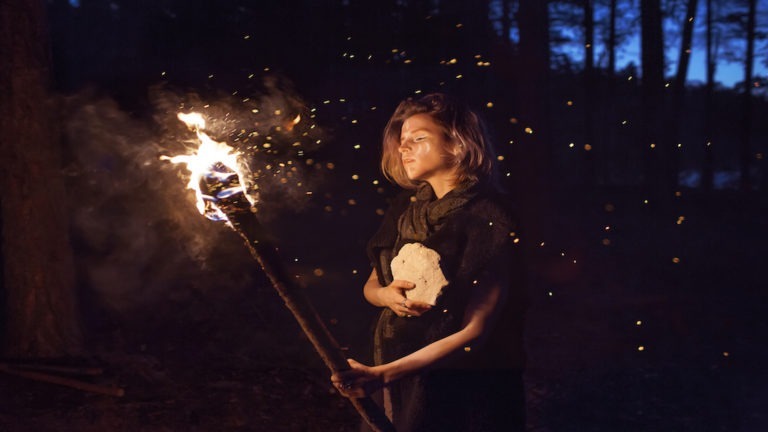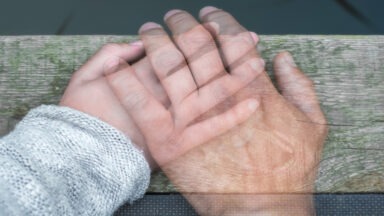What Does It Mean To Be A Witch?

What Does It Actually Mean To Be A Witch?
By: Laurie Rihiimaki | Feb. 11, 2019
The term, ‘witch’ gets thrown around in everyday life soaked with a long history of negative connotation.‘Witch’ derives from the Old English noun, ‘wicca’ meaning a male witch and ‘wice’ meaning a female witch or sorceress. However, this negative stigma has recently been viewed as outdated and tired. So, what does it mean to be a witch?
Definition of A Witch
In general, witches today can be defined in three ways: someone who actively practices magical rituals or spells, someone who has a spiritual connection such as a psychic medium or a tarot reader, or someone who worships the Pagan gods.
The reality of what it means to be a witch today carries many traditions of the Pagan religion; something which was previously thought to be tied to the devil or satanic rituals. Modern day witchcraft often includes the lighting of candles, meditation, yoga, incense, the smudging of sage, crystals, dream analysis, and other rituals connected to Pagan roots.
However, witchcraft is simply about using the power of the universe and the mind to attract wants and desires. It’s about being in tune with Earth’s natural resources and using them to mystically quench a spiritual thirst.
How to Spot A Witch
Spotting a witch today compared to the 1600s is an entirely different puzzle. Nowadays, it’s rather easy to determine who’s a witch because they are generally proud of their mystical practice. We now know you can’t simply label someone a witch based on their physical appearance or outspokenness.
But, in the late-1500s to mid-1600s in Eastern Europe and early colonial America, witches were named purely based on societal suspicion. For example, if a woman was outspoken, she was a witch. If she owned land or had a great deal of assets, she was a witch. If a woman was widowed or a spinster, she was considered out of the ordinary, therefore, she was deemed a witch.
After the label ‘witch’ was plastered on a woman in the community, there were many ways to theoretically prove her connection to the feared and mysterious craft. One of these tests included the bizarre witch cake; a rye flour cake baked with the urine of the accused, which was then fed to a local dog that the community observed to determine if it showed the same behaviors as the ‘witch.’ People believed the urine would transmit satanic juices to the dog because of its supposed association with the devil.
There were many other devised strategies to determine the presence of a witch in the community including:
- Weighing the accused against a stack of bibles
- Asking them to recite the Lord’s prayer
- Counting the number of pets they had
- Counting the number of marriages they had
- Asking them if they had dreams that included Native Americans or their culture
- Observing if they talk to themselves
These tests and many others determined a community member’s right to continuing living.
The accused was also searched for the physical mark of a witch, including birthmarks, scars, or extra nipples. These mysterious physical marks, which we now discern as common biological features, were considered signs of the devil’s presence. The accused were pricked with knives on these marks; if the mark did not bleed, they were deemed a witch.
The Destigmatization of Witches
Witchcraft is not as highly feared as it once was. There are no widespread witch hunts or constant fear associated with the neighborhood spinsters and widows. The destigmatization of witches is seen more and more in our everyday lives as popular stores sell tarot cards and crystals. While smudging with sage and owning a spell book is a trending lifestyle add-on visible all over Instagram.
While this destigmatization of witches may seem trendy on the surface, as it’s popularly marketed, the spread of witch-awareness is closely related to a greater cause: the women’s empowerment movement rapidly spreading across the world.
Today, people recognize the need for a change in energy relating to the female’s place in society, but often women are feared for being strong-willed and outspoken. Then, like now, powerful women or those with important titles often face greater challenges than their male counterparts. In the 1600s they were burned at the stake or stoned to death; today, they can face belittlement of their accomplishments, their morality questioned, or reputations intentionally tarnished.
With that being said, one could argue that witchcraft is a necessary addition to modern society as it illuminates the daily struggles of women on various levels. With that feminist insight in mind, it’s vital to remember that witchcraft is not just one single thing across the board. It’s certainly not just the performance of spell casting or the donning of crystals. It’s an understanding of one’s own spirituality. And, at this period in time, which is faced with drastically polarizing viewpoints, it is essential to have beliefs that we can mold to our own specific needs.
Achieving Modern Enlightenment With Gurdjieff's Fourth Way

Around the turn of the 20th century, the mysticism movement aimed to bridge the gap between western and eastern philosophies with theosophy, esotericism, and a burgeoning interest in the occult. This spiritual zeitgeist inspired George Gurdjieff to develop the Fourth Way; exercises that can be incorporated into one’s daily life to remove yourself from a state of hypnotic waking sleep.
The Fourth Way: Hindu, Sufi, And Christian Esotericism
Deeply devoted spiritual practices often focus on either a detachment from the physical or a strict dominance over it. Georges Gurdjieff did not see these attempts to embrace a higher self as practical, believing instead that enlightenment could be achieved without asceticism.
Born in 1866 in Alexandropol, Armenia, Gurdjieff was inspired by the theosophical movement and decided to travel to Central Asia and the Middle East in search of esoteric spiritual leaders and seekers of truth. Upon his return, he penned a series of books that would become the foundation of his spiritual practice: The Fourth Way. The second book in the series and 1979 film, Meetings with Remarkable Men, detailed his encounters with spiritual leaders on his journey who were more likely fictional characters symbolic of the three “ways” preceding his.
During his travels, he was inspired by the spiritual ways of the fakir, monk, and yogi, though he saw their methods as only successful in achieving a fraction of development, with the more practical roots of their disciplines lost in antiquity. At the same time, he believed that the effects of modern technology and society were entrancing everyone into a hypnotic waking sleep.




































